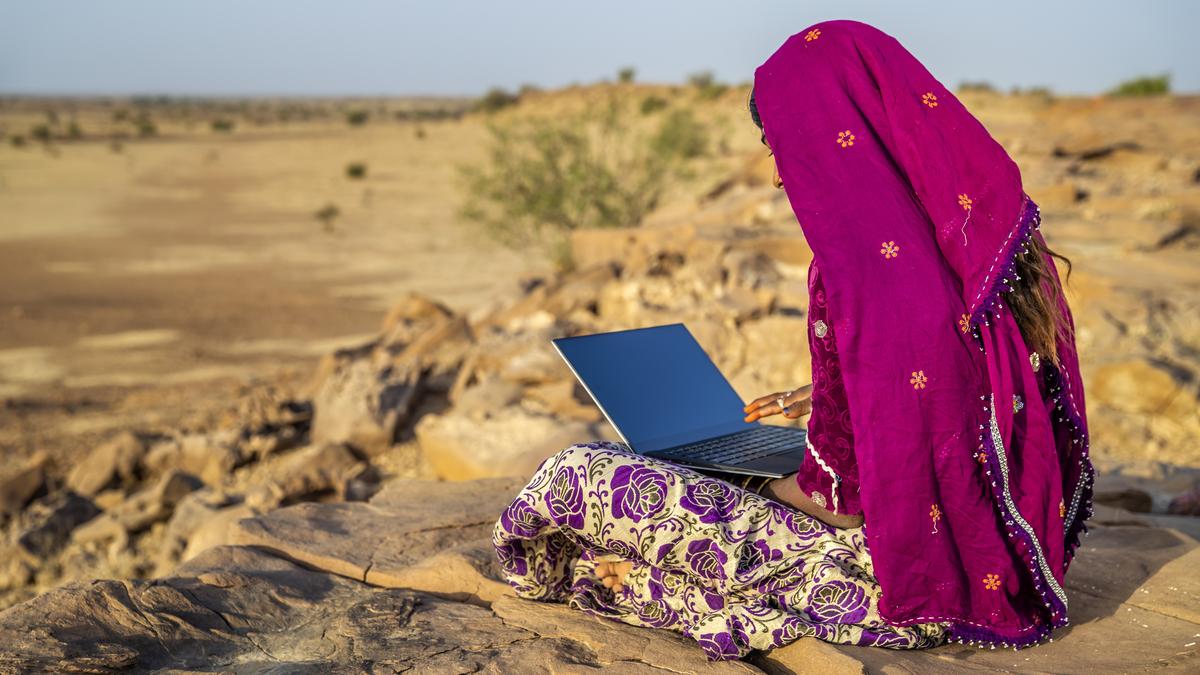In India, the 1990s and the early 2000s were a time of education activities on a mass scale. But results from the nationwide Annual Status of Education Report (ASER) surveys of that period indicated that while enrolment and infrastructure indicators showed a rush to schools, learning indicators pointed to no change. At the same time, computers, mobile phones, and digital technology were making waves. It was a time of many possibilities and promises with digital solutions and businesses. However, it was when the COVID-19 pandemic struck that the digital revolution hit the ground in rural India. This is reflected very well in ASER data.
Smartphone use and rural households
In 2018, nearly 90% of rural households had simple mobile phones and 36% had smartphones. In 2022, the proportion of households with smartphones had risen to over 74% and, according to ASER 2024, it has grown further to 84% this year. While the percentage of children who have access to a smartphone at home is nearing saturation, the proportion of children aged between 14 and 16 years who own a smartphone has risen from 19% to about 31% within a year.
It is not clear from the ASER data whether mothers of young children have their own phones. This ownership of smartphones is important when it comes to use in supporting young children’s learning and their own learning.
The main use of smartphones during the pandemic period was that of a carrier of texts, worksheets, and videos, which were a substitute for textbooks. Virtual training sessions had become common too. As the pandemic faded away, the digital skills learned during the period sustained, although some of the practices became less important and a new excitement began to build around artificial intelligence (AI).
The best promise of the digital revolution was, to this writer, in the open and continuing education domain for the underprivileged. The need and the possibilities in India are tremendous. For example, at this time, over 40% mothers of schoolchildren are not schooled or have completed school less than class five. Nearly another 40% are schooled between class six and class 10, and the remaining have completed class 10. Educating mothers so that they can help children is an investment India should make to accelerate and strengthen the education of children.
Over the past 30 years, we have lived through the computer, the Internet, and mobile revolutions, and we are now looking at AI. With every new wave of technology, there is new hope and talk of revolutionising education. By the time the technology becomes affordable, something new and exciting for the privileged shows up on the horizon, but technology has not delivered on its promise where the education of the underprivileged is concerned. One of the biggest constraints is the availability of devices.
But, as ASER 2024 data show, availability of individually owned smartphones is going to be less and less of a constraint. Most rural households already have a smartphone. Getting a second phone may be easier for many families in times to come.
No language barrier
Hardware, without a doubt, is becoming easily available. Language used to be a major impediment. It is not so any more. Writing or dictation in local languages is now possible. Translation from one language to another is easy. All the tools needed for learning are accessible, if you know what to access, where, and how. But what if there was one place in a village — let us call it school — where questions of what, where, and how were answered by an intelligent device?
Access to schools is complete. But school attendance is still a problem. In a village or a community, some children go to a private school, some to a government school, others to private classes and some do not go to school at all. This is somewhat of a chaotic situation at the level of the village and also at the larger community level, which reflects in the quality of learning in schools.
During the pandemic, in many villages of Maharashtra, a learning programme was broadcast from a vantage point. It should be possible to work out a curriculum and broadcast schedule in villages so that group learning can be organised. Organising new schools in this manner should be possible, although, initially, there may not be many takers.
Every civilisation has created its own schooling system over the last 5,000 years. Teachers and methods in one education system did not work in another, the curriculum in one country was not a good fit in another. That was because civilisations were separated by time, space, culture, and technology. The age of empires and colonialism started integrating civilisations. Although separated by national boundaries, countries today are integrated by science and technology. Education too is an integrating factor. But so is profit. Every technological innovation, barring those promoted by philanthropists as public goods, has to look for a ‘for-profit market’. Where profits cannot be made, innovations find limited use.
The prediction that hardware and devices would become inexpensive has come true but the need for a higher order and bigger hardware is growing with the innovations of AI. Will philanthropic investments be enough to help universalise the innovations that could revolutionise education? As a country, India needs to come up with a road map that allows the promise of technology to be harnessed for the benefit of those who need it the most.
Madhav Chavan is a co-founder of Pratham
Published – February 08, 2025 12:08 am IST


